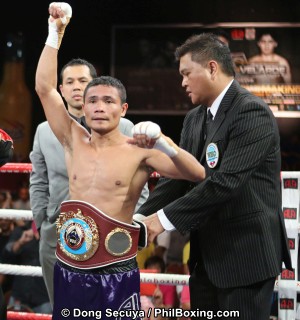
|
Philippines, 29 Dec 2025 |
Home >> News |
 |
||||
|
|
|
|
THE AMAZING GROWTH OF THE WBO IN THE ASIA-PACIFIC REGION - PART II By Rene Bonsubre, Jr. PhilBoxing.com Mon, 12 Oct 2015  In 2007, Donnie Nietes would win the vacant WBO world minimumweight title in Cebu City, Philippines. Nietes was also a reigning WBO Asia Pacific titlist. In 2007, Leon Panoncillo opened another regional title, the WBO Oriental belt. There was a growing demand from Asian promoters for WBO titles. In 2008, WBO Oriental and Asia Pacific belts combined for 53 total bouts, increasing to 56 in 2009 and 59 in 2010. In 2012, Panoncillo, upon the approval of the WBO Executive Board, opened the new WBO international title. Elite and very popular boxers like Manny Pacquiao, Juan Manuel Marquez, Zou Shiming, Tyson Fury held this prestigious title. This led to the creation of the WBO Asia Pacific Youth, WBO Asia Pacific female and WBO China national belts. Due to the increasing credibility in the region, Japan recognized the WBO in 2013. The JBC allowed their boxers to compete for WBO titles and produced three world champs ? Katsunari Takayama, Naoya Inoue and Kosie Tanaka, who won in their home country. The goal of Paco Valcarcel was achieved. Big time boxing landed in Asia. In 2013, Top Rank Promotions, in coordination with the Chinese Sports outfit SECA, brought big time boxing to Macau and was televised on HBO. The event showed WBO world title fights. Asia was now the latest professional boxing frontier. When it rains, it pours: The Comminist Party of China lifted their ban on pro boxing. The Professional Boxing Commission (PBC) of China was born. This new organization patterned their rules and regulations from the Association of Boxing Commissions (ABC). The PBC is composed of their President Han Jian Ping (Shanghai), Secretary General Iu Kin Hang (Macau) and Executive Secretary Wei Na (Beijing). Since the historic partnership of Top Rank and Seca, the PBC of China has licensed and regulated a total of 13 boxing events in Macau. There are also four other promoters in China who are promoting WBO title bouts which broadened the scope of the organization inside the most populous nation on earth. Last September 5, Top and SECA launched the LEAGUE OF FISTS, a grassroots boxing program with at least 80 Chinese boxers in ten weight categories. It will produce 224 bouts, 40 fights every month with the goal of producing 10 WBO Greater China champions. With China becoming a huge professional boxing market, the future of the WBO Asia Pacific is looking very bright. Since November 2014, the WBO International, WBO Asia Pacific, WBO Asia Pacific Youth, WBO Asia Pacific female, WBO China National and WBO Oriental have produced a total of 88 title fights. This produced sky rocketing revenues for the WBO, more than what was expected. Recently, boxing activity in countries like South Korea and Indonesia have been revitalized. There is also the continued strong presence of the WBO Asia Pacific in Thailand and the Philippines with their world champions, Pungluang Sor Singyu and Donnie Nietes, respectively. IS THE WBO ASIA PACIFIC NOW AT IT?S PEAK? NO, IT IS JUST GETTING STARTED AND THE BEST IS YET TO COME. Photo: WBO Vice-President for Asia Pacific Leon Panoncillo Jr (R) puts on the WBO championship belt to Donnie Nietes after Nietes successfully defended his title against Carlos Velarde of Mexico in Nov 2014. Click here to view a list of other articles written by Rene Bonsubre, Jr.. |
|
|
PhilBoxing.com has been created to support every aspiring Filipino boxer and the Philippine boxing scene in general. Please send comments to feedback@philboxing.com |
PRIVATE POLICY | LEGAL DISCLAIMER
developed and maintained by dong secuya © 2025 philboxing.com. |